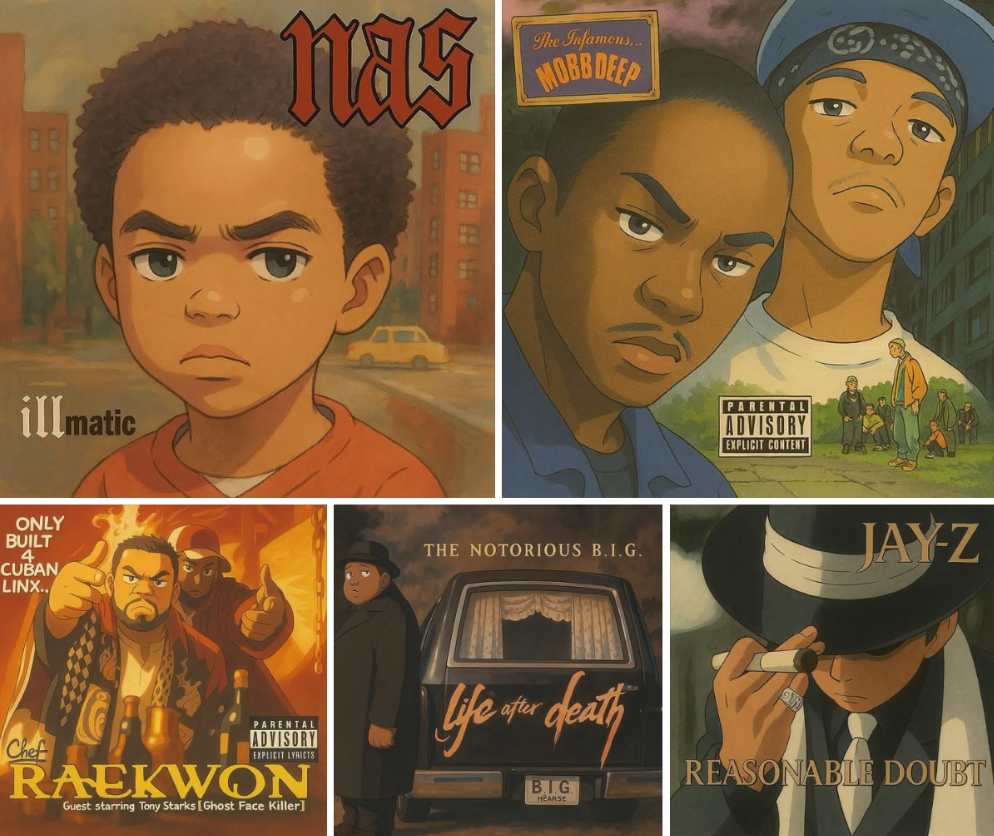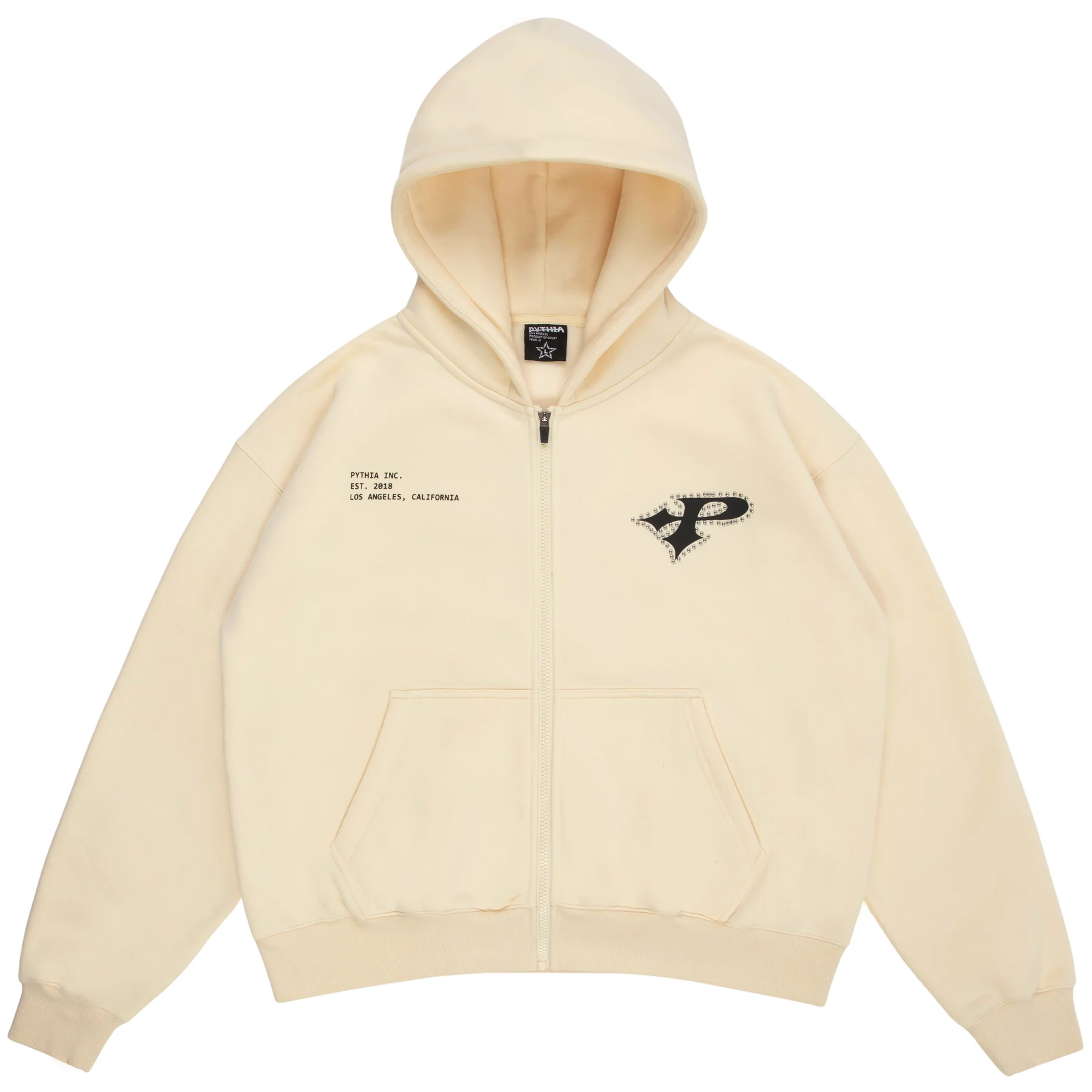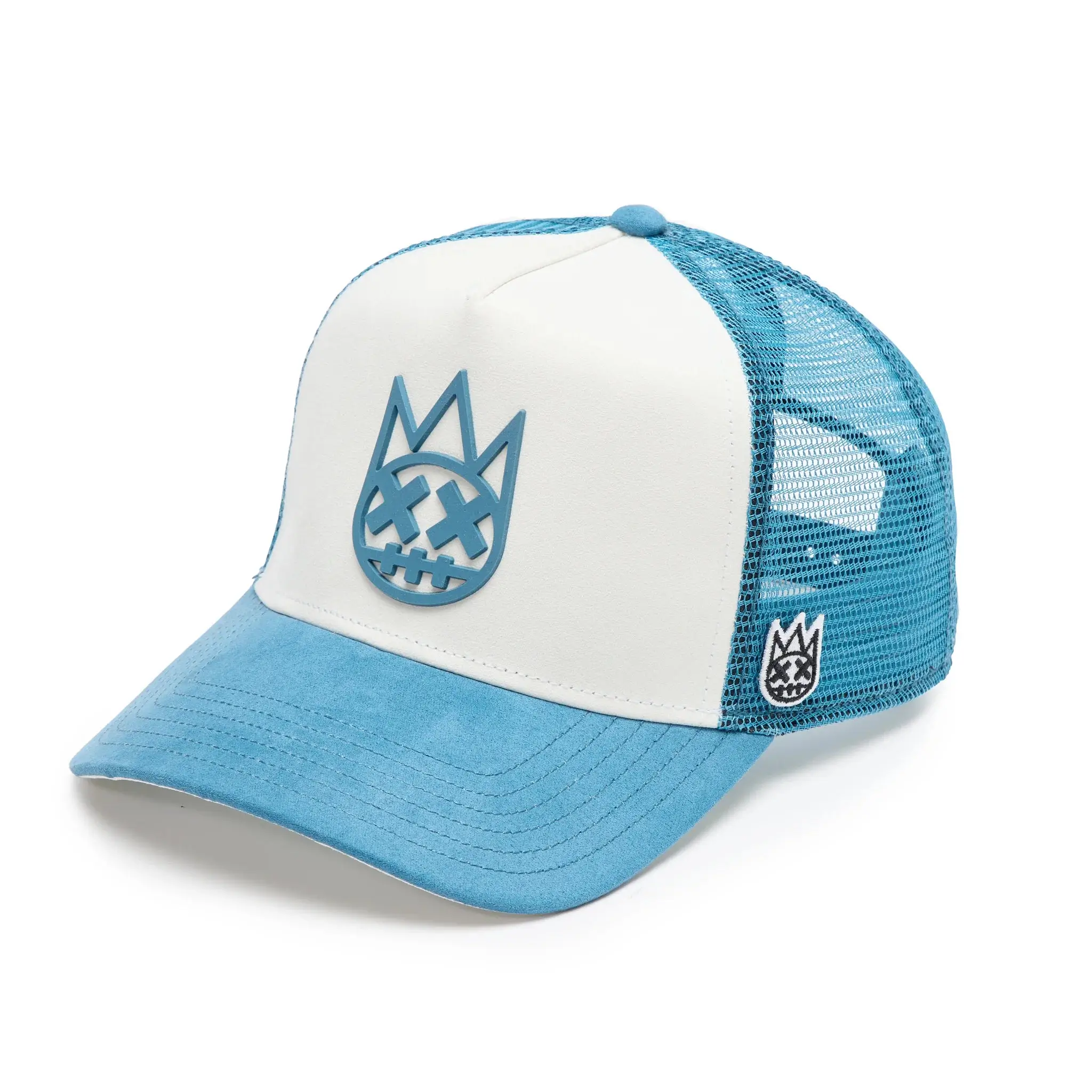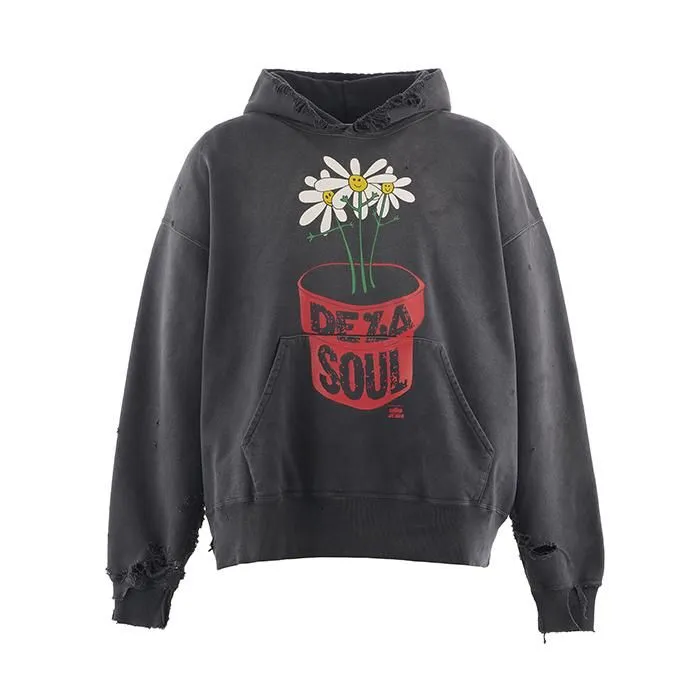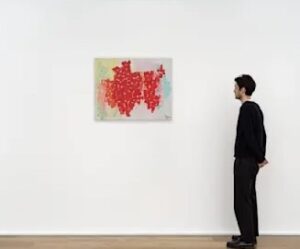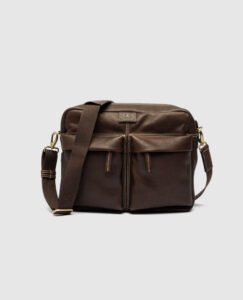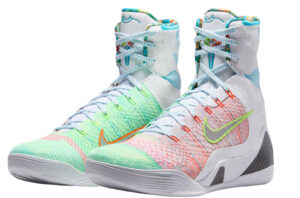Hip-hop and anime have been quietly orbiting each other for decades, but lately they’ve collided in vivid, unexpected ways. One of the most visually striking trends floating through the creative corners of the internet right now is the reimagining of classic New York City hip-hop album covers in the soft, whimsical, and deeply expressive style of Studio Ghibli.
It’s a mash-up that shouldn’t work—but it absolutely does.
Imagine the rugged streets of Queensbridge or Bed-Stuy rendered in the gentle, hand-painted strokes of My Neighbor Totoro. Picture Ghostface Killah floating over a Brooklyn rooftop with the same spiritual weight as Spirited Away’s Chihiro, or Nas as a quiet boy staring out at a decaying metropolis, with the texture and color palette of Princess Mononoke. It’s beautiful. It’s surreal. And it’s a reminder that hip-hop—like Ghibli—isn’t just about sound or style. It’s about world-building.
This visual flow speaks to something deeper than just aesthetics. It’s about legacy, emotion, and place.
Why This Works: Grit Meets Wonder
At first glance, gritty NYC hip-hop and Ghibli’s ethereal storytelling may seem worlds apart. But under the surface, both are steeped in themes of resilience, identity, and the interplay between harsh realities and inner dreams.
Studio Ghibli films often tackle mature, complex topics—war, death, loss, greed, and displacement—wrapped in a lush visual world. Likewise, classic hip-hop albums from NYC tell raw, unfiltered stories of systemic injustice, survival, and hope. The difference is the medium, not the message.
Reimagining hip-hop visuals in Ghibli’s style doesn’t sanitize them. It reframes them. It takes the edge and renders it through the lens of melancholy beauty—showing pain and pride with equal tenderness.
Let’s look at some of the most iconic NYC hip-hop albums and imagine how they’d look—and feel—when filtered through Studio Ghibli’s unique lens.
Nas – Illmatic (1994)
The Illmatic cover is one of the most recognizable in hip-hop: a young Nasir Jones’ face superimposed over a Queensbridge housing project. It’s simple, stark, and loaded with implication—childhood innocence layered over urban decay.
A Ghibli-style Illmatic would keep that same core image, but give it new depth. Picture a misty Queensbridge skyline drawn with the soft, detailed textures of Whisper of the Heart. Nas, still a child, gazes ahead—but with that subtle Ghibli emotion: quiet strength in his eyes, vulnerability in his posture. Faint spirits or shadowy figures hover in the background, evoking the ancestors or lost friends referenced in his lyrics.
A cat, maybe, watches from a windowsill—because in Ghibli, even the quietest moments breathe with life.
Wu-Tang Clan – Enter the Wu-Tang (36 Chambers) (1993)
The original cover has the Clan in hooded anonymity, faces hidden, evoking martial arts mystique and gritty East Coast energy. Reimagined through Ghibli, it becomes something else entirely—a surreal dojo on a foggy Staten Island hill, deep in a spirit forest.
The Wu-Tang members aren’t just masked men now—they’re part-mythical figures, like the forest gods of Princess Mononoke. One holds a katana, another sits cross-legged mid-air. RZA could be imagined as a shamanic conductor of sound, surrounded by floating vinyl records like spirits.
The whole scene hums with energy. The style would borrow from Nausicaä of the Valley of the Wind—a chaotic, mysterious world just barely held together by discipline and power.
The Notorious B.I.G. – Ready to Die (1994)
The original Ready to Die cover features a baby—representing Biggie—against a blank white backdrop. Minimalist. Unforgettable.
Ghibli would reinterpret that baby not just as a symbol, but as a story. Picture a tiny Biggie baby sitting on a red stoop in Brooklyn, with large curious eyes, surrounded by a cast of odd and lovable neighborhood spirits—some goofy, some menacing.
The blank white becomes a faded, hazy Brooklyn street scene—cars from the ’80s, cracked pavement, a radio humming. The sadness in the album becomes a kind of nostalgia in the art. It’s Only Yesterday, but with a Coogi sweater.
Jay-Z – Reasonable Doubt (1996)
Jay-Z’s debut is a study in noir: the fedora, the cigar, the shadows. It’s a mafia movie in audio form.
Through Ghibli’s lens, Jay becomes a quiet, calculating figure—maybe walking alone through a ghost-lit Manhattan alley, briefcase in hand, shadowed by towering spirit-figures in pinstripe suits. The color scheme would shift from stark black and white to deep blue and smoky grays, like The Wind Rises or Howl’s Moving Castle.
The visual could nod to Hayao Miyazaki’s love of flight—perhaps showing Jay suspended between skyscrapers, mid-leap between ambition and danger.
A Tribe Called Quest – Midnight Marauders (1993)
The cover of Midnight Marauders features the iconic red, green, and black abstract figure surrounded by a collage of hip-hop faces. It’s joyful, chaotic, and full of life.
A Ghibli version would lean fully into that energy. Think Ponyo meets Totoro. The figure dances through a vibrant New York—subways come to life, graffiti animals leap off walls, breakbeats ripple through the air like wind. Q-Tip, Phife Dawg, and Ali Shaheed would appear as animated travelers, bouncing across floating vinyl records, guided by playful musical spirits.
The style would be light, colorful, and filled with Easter eggs—faces morphing into clouds, bars of lyrics as floating ribbons of text.
Mobb Deep – The Infamous (1995)
This album is cold, grim, and brutally real. The original cover shows Havoc and Prodigy glaring at the camera, no smiles, no fantasy.
But Ghibli doesn’t flinch from the dark. Grave of the Fireflies proves that.
In a Studio Ghibli rework, Mobb Deep might be imagined as two teenage figures navigating a post-industrial NYC, buildings half-crumbling, skies overcast. Shadows of cops and enemies move like monsters in the mist. A cracked boombox plays distorted beats as they move from rooftop to rooftop, chased by ghosts of violence and memory.
It would be haunting—but human.
Cultural Crosscurrents: Anime and Hip-Hop’s Mutual Love
This isn’t the first time hip-hop and anime have touched. RZA scored Afro Samurai. Kanye West’s Stronger video was inspired by Akira. Lupe Fiasco, Megan Thee Stallion, and countless others have shouted out anime in their lyrics.
But this visual crossover—taking hip-hop’s most canonical images and filtering them through the lens of Studio Ghibli—hits different. It’s not just fandom. It’s transformation. It reveals emotional layers in the original work that might go unnoticed in harder styles.
It shows how even the most rugged art can carry tenderness.
The Power of Reimagination
These Ghibli-style reimaginings do more than remix the past—they create something new. They introduce classic hip-hop to new audiences. They invite anime fans into the depth and complexity of NYC rap. And most importantly, they honor the emotional core of both mediums.
In a Ghibli x hip-hop universe, the streets aren’t just tough—they’re alive. The MC isn’t just a voice—he’s a character on a mythic journey. And the album cover isn’t just marketing—it’s world-building.
We’re living in an age where lines are constantly being blurred—between genre, geography, and generation. The idea of reimagining Biggie as a Studio Ghibli character isn’t just a clever art concept—it’s a signal of how much art, identity, and culture have merged across boundaries.
NYC hip-hop and Studio Ghibli come from different corners of the world, but they both center the same things: story, soul, struggle, and style. That’s why when these two worlds meet, the result isn’t confusion. It’s clarity.
No comments yet.

